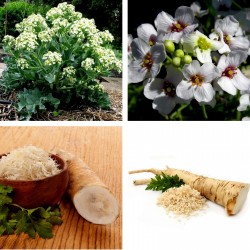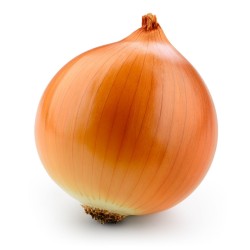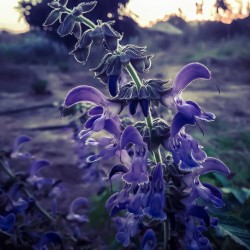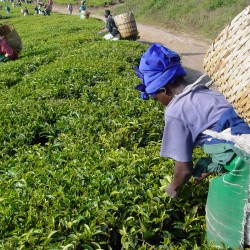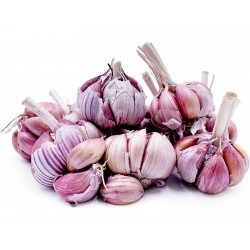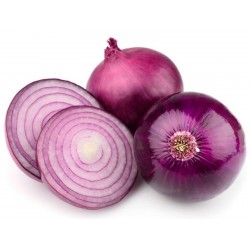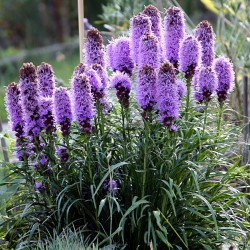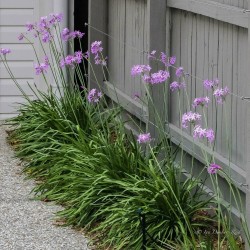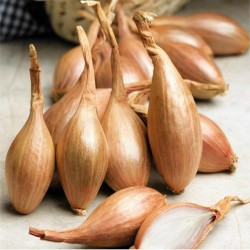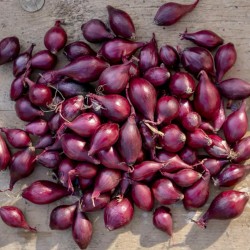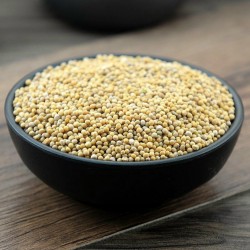Seeds Gallery Com,
5/
5
<!DOCTYPE html>
<html>
<head>
<meta http-equiv="Content-Type" content="text/html; charset=UTF-8" />
</head>
<body>
<h2><strong>Tea Tree Seeds, tea plant, tea shrub (Camellia sinensis)</strong></h2>
<h2><span style="color: #ff0000;"><strong>Price for Package of 3 seeds.</strong></span></h2>
<p><i><b>Camellia sinensis</b></i><span> </span>is a<span> </span>species<span> </span>of evergreen<span> </span>shrubs<span> </span>or small<span> </span>trees<span> </span>in the<span> </span>flowering plant<span> </span>family<span> </span>Theaceae<span> </span>whose leaves and leaf buds are used to produce<span> </span>tea. Common names include "<b>tea plant</b>", "tea shrub", and "tea tree" (not to be confused with<span> </span><i>Melaleuca alternifolia</i>, the source of<span> </span>tea tree oil, or<span> </span><i>Leptospermum scoparium</i>, the New Zealand tea tree).</p>
<p><i>C. sinensis</i><span> </span>var.<span> </span><i>sinensis</i><span> </span>and<span> </span><i>C. s.</i><span> </span>var.<span> </span><i>assamica</i><span> </span>are two major varieties grown today.<sup id="cite_ref-2" class="reference">[2]</sup><span> </span>White tea,<span> </span>yellow tea,<span> </span>green tea,<span> </span>oolong,<span> </span>dark tea<span> </span>(which includes<span> </span>pu-erh tea) and<span> </span>black tea<span> </span>are all harvested from one or the other, but are<span> </span>processed<span> </span>differently to attain varying levels of<span> </span>oxidation.<span> </span>Kukicha<span> </span>(twig<span> </span>tea) is also harvested from<span> </span><i>C. sinensis</i>, but uses twigs and stems rather than leaves.</p>
<h2><span class="mw-headline" id="Nomenclature_and_taxonomy">Nomenclature and taxonomy</span></h2>
<p>The<span> </span>generic<span> </span>name<span> </span><i>Camellia</i><span> </span>is taken from the<span> </span>Latinized name<span> </span>of Rev.<span> </span>Georg Kamel,<sup id="cite_ref-3" class="reference">[3]</sup><span> </span>SJ<span> </span>(1661–1706), a<span> </span>Moravian-born<span> </span>Jesuit<span> </span>lay brother, pharmacist, and missionary to the<span> </span>Philippines.</p>
<p>Carl Linnaeus<span> </span>chose his name in 1753 for the genus to honor Kamel's contributions to botany<sup id="cite_ref-4" class="reference">[4]</sup><span> </span>(although Kamel did not discover or name this plant, or any<span> </span><i>Camellia</i>,<sup id="cite_ref-5" class="reference">[5]</sup><span> </span>and Linnaeus did not consider this plant a<span> </span><i>Camellia</i><span> </span>but a<span> </span><i>Thea</i>).<sup id="cite_ref-6" class="reference">[6]</sup></p>
<p>Robert Sweet<span> </span>shifted all formerly<span> </span><i>Thea</i><span> </span>species to the genus<span> </span><i>Camellia</i><span> </span>in 1818.<sup id="cite_ref-7" class="reference">[7]</sup><span> </span>The name<span> </span><i>sinensis</i><span> </span>means "from China" in<span> </span>Latin.</p>
<p>Four varieties of<span> </span><i>C. sinensis</i><span> </span>are recognized.<sup id="cite_ref-FOC_1-1" class="reference">[1]</sup><span> </span>Of these,<span> </span><i>C. sinensis</i><span> </span>var.<span> </span><i>sinensis</i><span> </span>and<span> </span><i>C. s.</i><span> </span>var.<span> </span><i>assamica</i><span> </span>(JW Masters) Kitamura are most commonly used for tea, and<span> </span><i>C. s.</i><span> </span>var.<span> </span><i>pubilimba</i><span> </span>Hung T. Chang and<span> </span><i>C. s.</i><span> </span>var.<span> </span><i>dehungensis</i><span> </span>(Hung T. Chang & BH Chen) TL Ming are sometimes used locally.<sup id="cite_ref-FOC_1-2" class="reference">[1]</sup><span> </span>The Cambod type tea (<i>C. assamica</i><span> </span>subsp.<span> </span><i>lasiocaly</i>) was originally considered a type of assam tea. However, later genetic work showed that it is a hybrid between Chinese small leaf tea and assam type tea.<sup id="cite_ref-8" class="reference">[8]</sup></p>
<p>Tea plants are native to East Asia, and probably originated in the borderlands of north Burma and southwestern China.<sup id="cite_ref-Yamamoto_9-0" class="reference">[9]</sup></p>
<ul>
<li>Chinese (small leaf) tea [<i>C. sinensis</i><span> </span>var.<span> </span><i>sinensis</i>]</li>
<li>Chinese Western Yunnan Assam (large leaf) tea [<i>C. sinensis</i><span> </span>var.<span> </span><i>assamica</i>]
<ul>
<li>Indian Assam (large leaf) tea [<i>C. sinensis</i><span> </span>var.<span> </span><i>assamica</i>]</li>
</ul>
</li>
<li>Chinese Southern Yunnan Assam (large leaf) tea [<i>C. sinensis</i><span> </span>var.<span> </span><i>assamica</i>]</li>
</ul>
<p>Chinese (small leaf) type tea may have originated in southern China possibly with hybridization of unknown wild tea relatives. However, since no wild populations of this tea are known, the precise location of its origin is speculative.<sup id="cite_ref-Meegahakumbura_1_10-0" class="reference">[10]</sup><sup id="cite_ref-Meegahakumbura_2_11-0" class="reference">[11]</sup></p>
<p>Given their genetic differences forming distinct<span> </span>clades, Chinese Assam type tea (<i>C. s.</i><span> </span>var.<span> </span><i>assamica</i>) may have two different parentages – one being found in southern<span> </span>Yunnan<span> </span>(Xishuangbanna,<span> </span>Pu'er City) and the other in western Yunnan (Lincang,<span> </span>Baoshan). Many types of Southern Yunnan Assam tea have been hybridized with the closely related species<span> </span><i>Camellia taliensis.</i><span> </span>Unlike Southern Yunnan Assam tea, Western Yunnan Assam tea shares many genetic similarities with Indian Assam type tea (also<span> </span><i>C. s.</i><span> </span>var.<span> </span><i>assamica</i>). Thus, Western Yunnan Assam tea and Indian Assam tea both may have originated from the same parent plant in the area where southwestern China, Indo-Burma, and Tibet meet. However, as the Indian Assam tea shares no<span> </span>haplotypes<span> </span>with Western Yunnan Assam tea, Indian Assam tea is likely to have originated from an independent domestication. Some Indian Assam tea appears to have hybridized with the species<span> </span><i>Camellia pubicosta.</i><sup id="cite_ref-Meegahakumbura_1_10-1" class="reference">[10]</sup><sup id="cite_ref-Meegahakumbura_2_11-1" class="reference">[11]</sup></p>
<p>Assuming a generation of 12 years, Chinese small leaf tea is estimated to have diverged from Assam tea around 22,000 years ago, while Chinese Assam tea and Indian Assam tea diverged 2,800 years ago. This divergence tea would correspond to the last<span> </span>glacial maximum.<sup id="cite_ref-Meegahakumbura_1_10-2" class="reference">[10]</sup><sup id="cite_ref-Meegahakumbura_2_11-2" class="reference">[11]</sup></p>
<p>Chinese small leaf type tea was introduced into India in 1836 by the British and some Indian Assam type tea (e.g.<span> </span>Darjeeling tea) appear to be genetic hybrids of Chinese small leaf type tea, native Indian Assam, and possibly also closely related wild tea species.<sup id="cite_ref-12" class="reference">[12]</sup></p>
<h2><span class="mw-headline" id="Cultivars">Cultivars</span></h2>
<p>Hundreds,<sup id="cite_ref-13" class="reference">[13]</sup><span> </span>if not thousands of<span> </span>cultivars<span> </span>of<span> </span><i>C. sinensis</i><span> </span>are known. Some Japanese cultivars include:</p>
<ul>
<li>Benifuuki<sup id="cite_ref-ijtc_14-0" class="reference">[14]</sup></li>
<li>Fushun<sup id="cite_ref-vdat_15-0" class="reference">[15]</sup></li>
<li>Kanayamidori<sup id="cite_ref-ijtc_14-1" class="reference">[14]</sup></li>
<li>Meiryoku<sup id="cite_ref-vdat_15-1" class="reference">[15]</sup></li>
<li>Saemidori<sup id="cite_ref-vdat_15-2" class="reference">[15]</sup></li>
<li>Okumidori<sup id="cite_ref-vdat_15-3" class="reference">[15]</sup></li>
<li>Yabukita<sup id="cite_ref-vdat_15-4" class="reference">[15]</sup></li>
</ul>
<h2><span class="mw-headline" id="Description">Description</span></h2>
<p><i>C. sinensis</i><span> </span>is native to<span> </span>East Asia, the<span> </span>Indian Subcontinent, and<span> </span>Southeast Asia, but it is today cultivated across the world in tropical and subtropical regions. It is an evergreen<span> </span>shrub<span> </span>or small<span> </span>tree<span> </span>that is usually trimmed to below 2 m (6.6 ft) when cultivated for its leaves. It has a strong<span> </span>taproot. The flowers are yellow-white, 2.5–4 cm (0.98–1.57 in) in diameter, with seven or eight petals.</p>
<div class="thumb tright">
<div class="thumbinner"><img alt="Tea Tree Seeds, tea plant, tea shrub (Camellia sinensis)" src="https://upload.wikimedia.org/wikipedia/commons/thumb/3/36/Flower_of_Tea_plant.jpg/220px-Flower_of_Tea_plant.jpg" width="220" height="147" class="thumbimage" title="Tea Tree Seeds, tea plant, tea shrub (Camellia sinensis)" />
<div class="thumbcaption">
<div class="magnify"></div>
Flower of tea plant</div>
</div>
</div>
<p>The seeds of<span> </span><i>C. sinensis</i><span> </span>and<span> </span><i>C. oleifera</i><span> </span>can be pressed to yield<span> </span>tea oil, a sweetish seasoning and cooking oil that should not be confused with<span> </span>tea tree oil, an<span> </span>essential oil<span> </span>that is used for medical and cosmetic purposes, and originates from the leaves of a different plant.</p>
<div class="thumb tright">
<div class="thumbinner"><img alt="Tea Tree Seeds, tea plant, tea shrub (Camellia sinensis)" src="https://upload.wikimedia.org/wikipedia/commons/thumb/e/e3/Camellia_sinensis_-_K%C3%B6hler%E2%80%93s_Medizinal-Pflanzen-025.jpg/220px-Camellia_sinensis_-_K%C3%B6hler%E2%80%93s_Medizinal-Pflanzen-025.jpg" width="220" height="267" class="thumbimage" title="Tea Tree Seeds, tea plant, tea shrub (Camellia sinensis)" />
<div class="thumbcaption">
<div class="magnify"></div>
<i>C. sinensis</i><span> </span>plant, with cross-section of the flower (lower left) and seeds (lower right)</div>
</div>
</div>
<div class="thumb tright">
<div class="thumbinner"><img alt="Tea Tree Seeds, tea plant, tea shrub (Camellia sinensis)" src="https://upload.wikimedia.org/wikipedia/commons/thumb/e/e3/Camellia_sinensis_MHNT.BOT.2016.12.24.jpg/220px-Camellia_sinensis_MHNT.BOT.2016.12.24.jpg" width="220" height="166" class="thumbimage" title="Tea Tree Seeds, tea plant, tea shrub (Camellia sinensis)" />
<div class="thumbcaption">
<div class="magnify"></div>
<i>C. sinensis</i><span> </span>-<span> </span>MHNT</div>
</div>
</div>
<p>The leaves are 4–15 cm (1.6–5.9 in) long and 2–5 cm (0.79–1.97 in) broad. Fresh leaves contain about 4%<span> </span>caffeine, as well as related compounds including<span> </span>theobromine.<sup id="cite_ref-16" class="reference">[16]</sup><span> </span>The young, light-green leaves are preferably harvested for tea production; they have short, white hairs on the underside. Older leaves are deeper green. Different leaf ages produce differing tea qualities, since their chemical compositions are different. Usually, the tip (bud) and the first two to three leaves are harvested for processing. This hand picking is repeated every one to two weeks.</p>
<p>In 2017, Chinese scientists sequenced the genome of<span> </span><i>C. s. var. assamica .</i><span> </span>It contains about three billion base pairs, which was larger than most plants previously sequenced.</p>
<h2><span class="mw-headline" id="Cultivation">Cultivation</span></h2>
<p><i>C. sinensis</i><span> </span>is mainly cultivated in tropical and subtropical climates, in areas with at least 127 cm (50 in) of rainfall a year. Tea plants prefer a rich and moist growing location in full to part sun and can be grown in<span> </span>hardiness zones<span> </span>7 – 9. However, the clonal one is commercially cultivated from the equator to as far north as<span> </span>Cornwall<span> </span>and<span> </span>Scotland<span> </span>on the UK mainland.<sup id="cite_ref-19" class="reference">[19]</sup><sup id="cite_ref-20" class="reference">[20]</sup><span> </span>Many high-quality teas are grown at high elevations, up to 1,500 m (4,900 ft), as the plants grow more slowly and acquire more flavor.</p>
<p>Tea plants will grow into a tree if left undisturbed, but cultivated plants are pruned to waist height for ease of plucking. Two principal varieties are used, the small-leaved Chinese variety plant (<i>C. s. sinensis</i>) and the large-leaved Assamese plant (<i>C. s. assamica</i>), used mainly for black tea.</p>
<h3><span class="mw-headline" id="Chinese_teas">Chinese teas</span></h3>
<p>The Chinese plant is a small-leafed bush with multiple stems that reaches a height of some 3 m. It is native to southeast China. The first tea plant variety to be discovered, recorded, and used to produce tea dates back 3,000 years ago, it yields some of the most popular teas.</p>
<p><i>C. s.</i><span> </span>var.<span> </span><i>waldenae</i><span> </span>was considered a different species,<span> </span><i>C. waldenae</i><span> </span>by SY Hu,<sup id="cite_ref-ICS_21-0" class="reference">[21]</sup><span> </span>but it was later identified as a variety of<span> </span><i>C. sinensis</i>.<sup id="cite_ref-22" class="reference">[22]</sup><span> </span>This variety is commonly called Waldenae Camellia. It is seen on<span> </span>Sunset Peak<span> </span>and<span> </span>Tai Mo Shan<span> </span>in<span> </span>Hong Kong. It is also distributed in<span> </span>Guangxi<span> </span>province, China.<sup id="cite_ref-ICS_21-1" class="reference">[21]</sup></p>
<h3><span class="mw-headline" id="Indian_and_Nepali_teas">Indian and Nepali teas</span></h3>
<p>Three main kinds of tea are produced in India:</p>
<ul>
<li>Assam<span> </span>comes from the heavily forested northeastern section of the country,<span> </span>Assam. Tea from here is rich and full-bodied. In Assam, the first tea estate of India was established, in 1837.</li>
<li>Darjeeling<span> </span>is from the cool and wet<span> </span>Darjeeling<span> </span>region, tucked in the foothills of the<span> </span>Himalayas. Tea plantations reach 2,200 meters. The tea is delicately flavored and considered to be one of the finest teas in the world. The Darjeeling plantations have three distinct harvests, termed 'flushes', and the tea produced from each flush has a unique flavor. First (spring) flush teas are light and aromatic, while the second (summer) flush produces tea with a bit more bite. The third, or autumn flush gives a tea that is lesser in quality.</li>
</ul>
<p>Nepali tea is also considered to be similar to the tea produced in Darjeeling, mostly because the eastern part of Nepal, where a large amount of tea is produced, has similar topography to that of Darjeeling.</p>
<ul>
<li>Nilgiri<span> </span>is from a southern region of India almost as high as Darjeeling. Grown at elevations between 1,000 and 2,500 m, Nilgiri teas are subtle and rather gentle and are frequently blended with other, more robust teas.<sup class="noprint Inline-Template Template-Fact">[<i><span title="This claim needs references to reliable sources. (December 2014)">citation needed</span></i>]</sup></li>
</ul>
<div class="thumb tright">
<div class="thumbinner"><img alt="Tea Tree Seeds, tea plant, tea shrub (Camellia sinensis)" src="https://upload.wikimedia.org/wikipedia/commons/thumb/8/84/Camellia_sinensis-fruto.jpg/200px-Camellia_sinensis-fruto.jpg" width="200" height="150" class="thumbimage" title="Tea Tree Seeds, tea plant, tea shrub (Camellia sinensis)" />
<div class="thumbcaption">
<div class="magnify"></div>
Seed-bearing fruit of<span> </span><i>C. sinensis</i></div>
</div>
</div>
<h3><span class="mw-headline" id="Pests_and_diseases">Pests and diseases</span></h3>
<div class="hatnote navigation-not-searchable">Main article:<span> </span>List of tea diseases</div>
<div class="hatnote navigation-not-searchable">See also:<span> </span>List of Lepidoptera that feed on Camellia</div>
<p>Tea leaves are eaten by some<span> </span>herbivores, such as the<span> </span>caterpillars<span> </span>of the<span> </span>willow beauty<span> </span>(<i>Peribatodes rhomboidaria</i>), a<span> </span>geometer moth.</p>
<h2><span class="mw-headline" id="Health_effects">Health effects</span></h2>
<p>Although health benefits have been assumed throughout the history of using tea as a common beverage, no high-quality evidence shows that tea confers significant benefits.<sup id="cite_ref-medline_23-0" class="reference">[23]</sup><sup id="cite_ref-nccih_24-0" class="reference">[24]</sup><span> </span>In<span> </span>clinical research<span> </span>over the early 21st century, tea has been studied extensively for its potential to lower the risk of<span> </span>human diseases, but none of this research is conclusive as of 2017.</p>
<h2><span class="mw-headline" id="Biosynthesis_of_caffeine">Biosynthesis of caffeine</span></h2>
<p>Caffeine, a molecule produced in<span> </span><i>C. sinensis</i>, functions as a<span> </span>secondary metabolite. Caffeine is a purine alkaloid and its biosynthesis occurs in young tea leaves and is regulated by several enzymes.<sup id="cite_ref-25" class="reference">[25]</sup><sup id="cite_ref-26" class="reference">[26]</sup><span> </span>The biosynthetic pathway in<span> </span><i>C. sinensis</i><span> </span>differs from other caffeine-producing plants such as<span> </span>coffee<span> </span>or<span> </span>guayusa. Analysis of the pathway was carried out by harvesting young leaves and using reverse transcription<span> </span>PCR<span> </span>to analyze the genes encoding the major enzymes involved in synthesizing caffeine. The gene<span> </span><i>TCS1</i><span> </span>encodes caffeine synthase. Younger leaves feature high concentrations of TCS1 transcripts, allowing more caffeine to be synthesized during this time. Dephosphorylation of xanthosine-5'-monophosphate into<span> </span>xanthosine<span> </span>is the committed step for the xanthosines entering the beginning of the most common pathway. A sequence of reactions turns xanthosine into 7-methylxanthosine, then 7-methylxanthine, then theobromine, and finally into caffeine.</p>
<h2 class="title style-scope ytd-video-primary-info-renderer"><yt-formatted-string force-default-style="" class="style-scope ytd-video-primary-info-renderer">Tea Germination from Seed</yt-formatted-string></h2>
<p><iframe width="640" height="385" src="https://www.youtube.com/embed/Dh9dhkOBynw?rel=0&hd=1" frameborder="0" allowfullscreen="allowfullscreen" class="embed-responsive-item"> </iframe></p>
</body>
</html>
MHS 3





